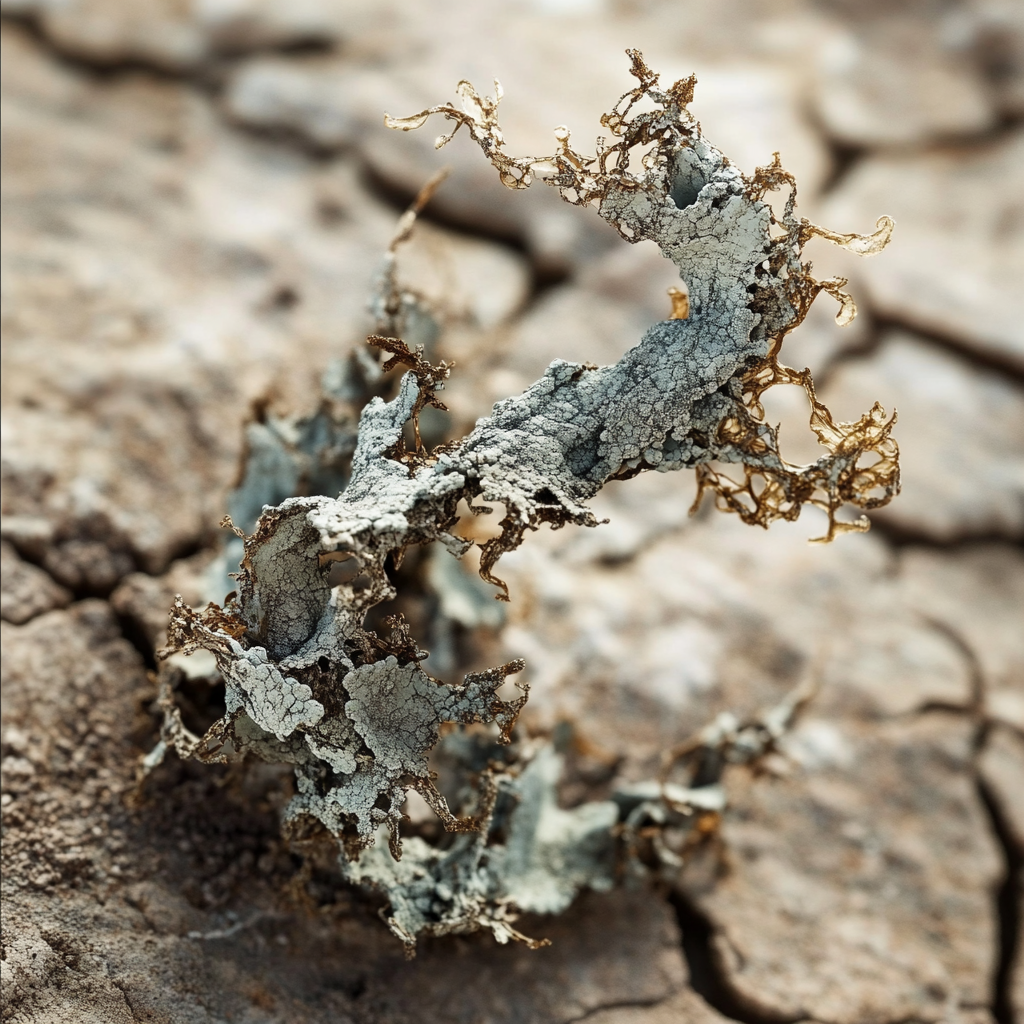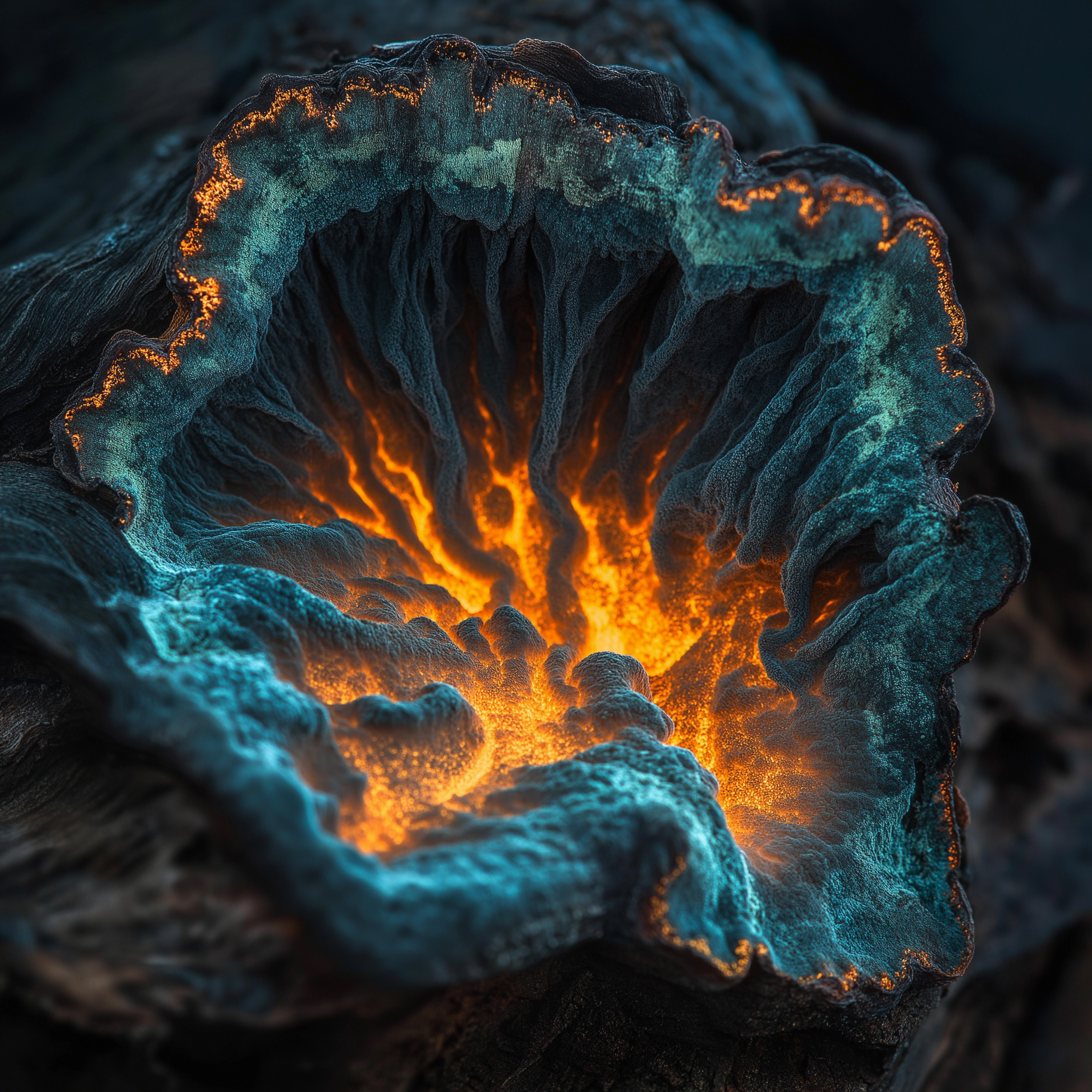Speculative Vegetation
The content presented here is entirely fictional and created for artistic and speculative purposes. These organisms do not exist in nature and is a product of AI-assisted creative worldbuilding. Any resemblance to real-life flora is purely coincidental.
Duskrise Moss (Aridothera tenax)
Duskrise Moss is a heat-resistant moss from Maharashtra’s arid soils. It curls up by day, unfurls at night, and thrives through a symbiotic bond with insects. Valued by wildlife and indigenous communities, it’s also a model for drought-resistant tech. AI-generated visuals explore its structure from macro to microscopic detail.





Emberveil (Mycothallus borealis)
During the endless summer daylight, near Yellowknife, Canada, a rare lichen called Emberveil emerges within the hollowed trunks of decaying black spruce. This bioluminescent lichen glows faintly at dusk, pulsing in shades of teal, orange, and deep blue, creating eerie, flickering lights in the boreal forest. Caribou and musk oxen instinctively seek it out, drawn to its rich, probiotic properties that aid digestion and boost resilience against harsh Arctic winters. Local legends say that those who consume Emberveil gain a heightened sense of direction, guiding them safely through the tundra’s endless whiteouts.







Iceborne Redwood (Metasequoia arctica)
Once thought lost to time, the Metasequoia lineage stunned scientists when Metasequoia glyptostroboides was rediscovered in China in 1941, proving that some prehistoric flora had survived in isolated pockets. Now, as Arctic ice retreats, another forgotten relative has emerged—Metasequoia arctica. Preserved for millennia in frozen seed form, its return began when an iceberg, dislodged by rising temperatures, drifted ashore on Svalbard’s black sand beaches, scattering ancient spores into the volcanic soil. Against all odds, these primordial redwoods are sprouting once more, their copper-orange bark and blue-green needles defying the tundra’s chill.






For more flora and its lore , please check my Instagram page dedicated to this exploration.
@botanicfables









